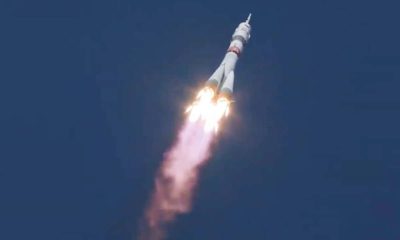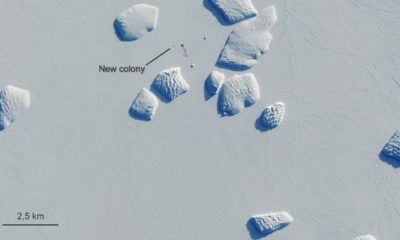Published
6 years agoon
By
AP News
WASHINGTON — The amount of ice circling Antarctica is suddenly plunging from a record high to record lows, baffling scientists.
At the polar regions, ice levels grow during the winter and shrink in the summer. Around Antarctica, sea ice averaged 4.9 million square miles in 2014. By 2017, it was a record low of 4.1 million square miles, according to the study in Monday’s Proceedings of the National Academy of Sciences.
The difference covers an area bigger than the size of Mexico. Losing that much in just three years “is pretty incredible” and faster than anything scientists have seen before, said study author Claire Parkinson, a NASA climate scientist. Antarctic sea ice increased slightly in 2018, but still was the second lowest since 1979. Even though ice is growing this time of year in Antarctica, levels in May and June this year were the lowest on record, eclipsing 2017, according to the ice data center.
Ice melting on the ocean surface doesn’t change sea level. Non-scientists who reject mainstream climate science often had pointed at increasing Antarctic sea ice to deny or downplay the loss of Arctic sea ice.
While the Arctic has shown consistent and generally steady warming and ice melt — with some slight year to year variation — Antarctica has had more ups and downs while generally trending upward. That is probably in part due to geography, Parkinson and Serreze said.
The Arctic is a floating ice cap on an ocean penned in by continents. Antarctica is just the opposite, with land surrounded by open ocean. That allows the ice to grow much farther out, Parkinson said.
When Antarctic sea ice was steadily rising, scientists pointed to shifts in wind and pressure patterns, ocean circulation changes or natural but regular climate changes like El Nino and its southern cousins. Now, some of those explanations may not quite fit, making what happens next still a mystery, Parkinson said.


Immigration Agency Leader Resigns, Only Weeks in Office


SpaceX Launches 2nd Crew, Regular Station Crew Flights Begin


NASA Craft Making Daring Grab for Asteroid Rubble Today


Russian-US Crew Welcomed Aboard the Space Station


Poop Scoop: Satellite Images Reveal Antarctic Penguin Haunts


2020's Final Mars Mission Poised for Blastoff From Florida




